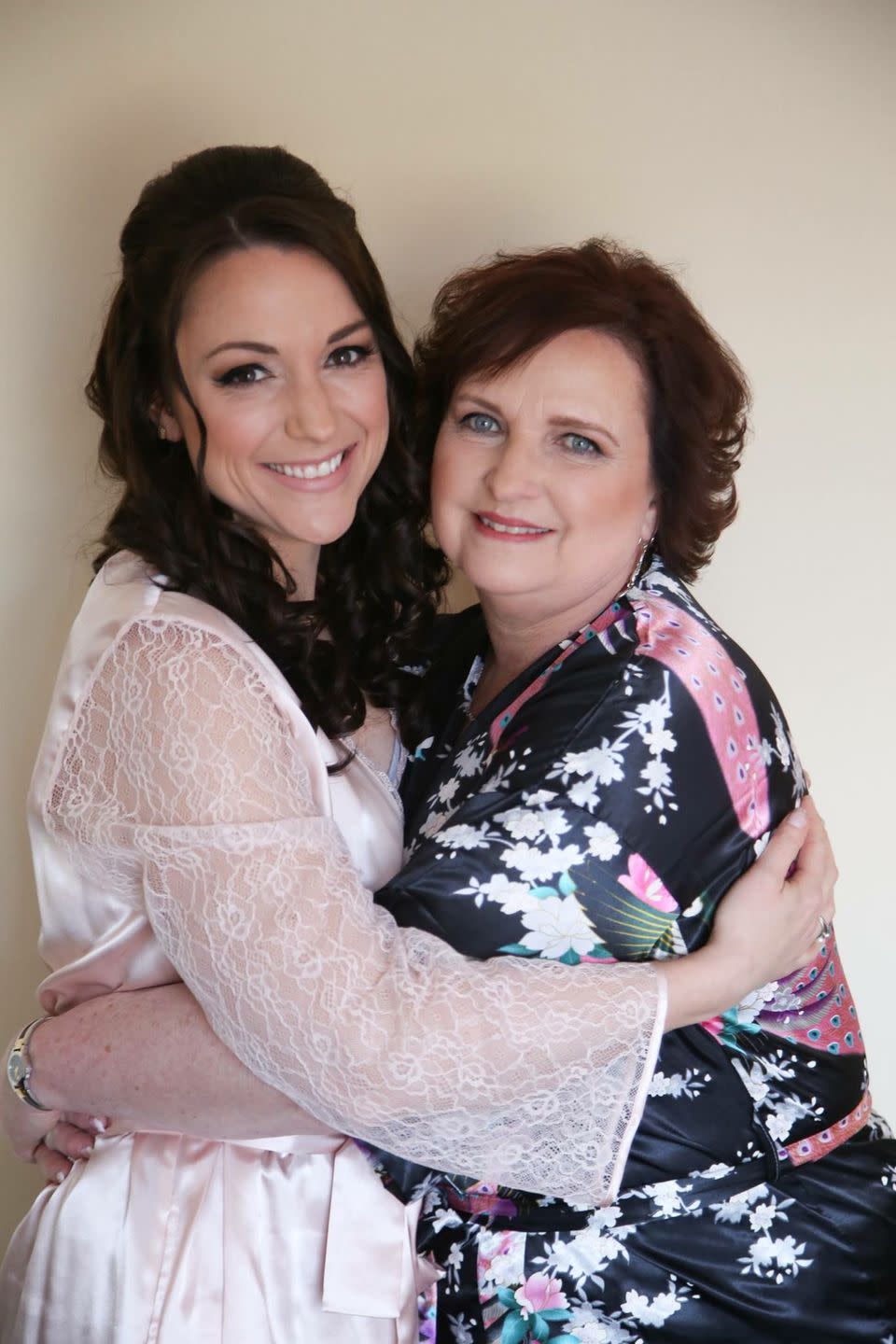How to Stick to Weight Loss Goals

Last fall, I had a frightening and eye-opening health scare. Never did I imagine that after a routine gynecological exam I would hear the words “you need surgery.” I was told I had cervical cancer and, thank goodness, we caught it early. I didn’t want to add stress to my already worried husband and family, so I turned to food to cope in the following weeks. Take-out was my best friend, and I sometimes found myself ordering not one over-indulgent dinner, but two ... with dessert on the side. I knew my behavior wasn’t healthy for my body or my mind, but it was comforting to me.
After three months and one very painful surgery, I was given the all-clear on my health. But I'd gained 25 pounds of stress weight, plus some other unhealthy habits.
This past January, I thought, “Perfect timing, it’s the new year! I’ll make some resolutions.” Cut to February, and I'd already broken all my resolutions. I'm not alone though; according to U.S. News, about 80 percent of resolutions fail by the second week of February.

But as my mom (pictured with me above) always said, “We only get one body, be good to it.” So in an effort to put my health first, I’m still on a mission to make 2018 my healthiest year yet. Resolutions aren’t working for me, clearly, and don’t for many others, so maybe the key is rethinking how I go about making healthy changes.
I want my new goals to last longer than a year. I want habits to be formed. I want a lifestyle change. So I turned to some brilliant experts to help me. Here's what I've learned so far about why resolutions often fail and what you can do to stay the course, no matter where or when you start:
Start small and keep it simple.

Originally, I pressured myself to work out every day and then I beat myself up about it when I didn't stick to the plan. But registered dietitian Jackie London explained to me why this strategy doesn’t work: “While you might be motivated to just sprint right out of the gate, we always lose steam once the motivation wanes and real life gets in the way,” says Jackie. “Adopting an all-or-nothing approach sets us up for failure because we haven’t made habits out of smaller changes that work for us - the ones that ultimately lay the ground work for a healthier lifestyle overall.” Instead, start with the smallest, easiest thing you can think of doing right out of the gate, and commit to doing that for just one month.
“The key is to have an overarching goal with a set list of specific, attainable objectives that you can establish for yourself in smaller, realistic, actionable chunks,” adds Jackie. “It’s so much less intimidating (and so much more exciting!) to get started on something new when you don’t have to think about the whole year ahead of you and you can just focus on one small task, one month, week, day, and even hour at a time.”
My refreshed (and realistic) goals for this month: Double up on veggies at dinner and forgo heavy carbs at night.
Get specific.

When I first set out to make changes, I didn’t give myself enough direction. I wanted to wake up early, lose weight, and eat healthier. But that didn’t provide a roadmap to guide me. “The most common mistake we make when goal-setting is having a highly general end goal without a game plan,” says Jackie. “Avoiding this comes with getting super specific about what you really want - if it’s weight-loss, make it something quantifiable (and that doesn’t mean it has to be scale-focused or quantifiable with a set number!).” It just has to be specific to you in a manner in which you feel comfortable. For some, that might mean, “I want to lose 20 lbs. this year and lower my blood pressure by 10mmHg,” and for others, it can be as simple as, “I want to feel comfortable zipping, buttoning, and wearing my favorite pair of jeans without feeling self-conscious.”
My more-specific milestones to achieve: Wake up between 6-6:30 a.m. each day and work out before work to lose the weight I gained during the health scare, and stop over-eating sweets and processed foods.
Pro tip: My colleague, Woman’s Day Deputy Editor Abigail Cuffey, gave me a trick to get my butt out of bed - get a coffee maker that auto programs. “Having a hot pot of coffee waiting for me is the reason I get out of bed in the morning. It gives me an instant caffeine jolt and makes my house smells amazing.”
When it comes to exercise, find something you truly enjoy (and that's convenient!).

I like the way I feel when I work out, but getting up and doing it can be hard - especially in frigid weather. If I am going to commit to my health this year, I decided to invest in it. I love group classes, but with the new weight, I felt self conscious about going to class with others, so I decided to try a Peloton bike at home.
I spoke with Jenn Sherman, senior instructor at Peloton, about why this at home workout could work for me: “It’s all about the community. With the Peloton bike, you can log in and take live instructor-led classes with hundreds of people around the U.S. which show up on a leaderboard (like teenage XBOX games, but with more sweat!). If you want to compete with those people on the leaderboard and try and beat their scores, you can. Or you can just motivate yourself. But knowing there is a community to support you can help in a huge way. There is an accountability in knowing you are not riding alone at home, there are thousands of others joining you.” And she was right, I am finding there is no excuse to NOT workout. It's right in my home.
My new commitment: Ride at least three times a week, whether it’s for 20 minutes or 60, depending on my schedule. I am even riding in live classes with my sister who lives four hours away!
Hold yourself accountable.

Sign up for something you are going to commit to. That could be a workout class you’ve prepaid for, like FitReserve, or making a running date with a friend. According to a recent study by the American Society of Training and Development (ASTD), there is a 65 percent chance of completing your goal if you commit to someone. Find a workout buddy and make a running date!
My new calendar reminders: I signed up for the NYC half marathon. I paid for my entry and already invited my mom to come watch me. I have to train to accomplish this goal, so seeing this date looming on my calendar reminds me to get up every morning and do a workout. I also wrote in my long runs so know what I have coming up and am planning my social activities around that.
Drink water all day.

“Staying hydrated is key for weight management and for health overall,” says Jackie. “Swap out sugary beverages for unsweetened beverages (that means juice, soda, sweetened coffee and tea drinks, alcohol mixers, and even sports drinks). It’s amazing how many of us say things like ‘I don’t drink calories,’ but don’t realize how much they’re taking in from beverages.” Staying accountable can mean putting a 1.5L bottle of water on your desk, committing to a time of day by which you can realistically finish it, and setting an alarm on your phone or an alert in your calendar for that time so that you actually do. You’ve just established a reasonable, actionable goal and used the tools around you and at your disposal to keep yourself accountable to yourself.”
My new H2O habits: I swapped out soda for flavored seltzers and coffee, which I always needed sugar in, for tea. I bought a new, pretty water bottle to keep at work so I refill it every time I get up from my desk.
You Might Also Like

